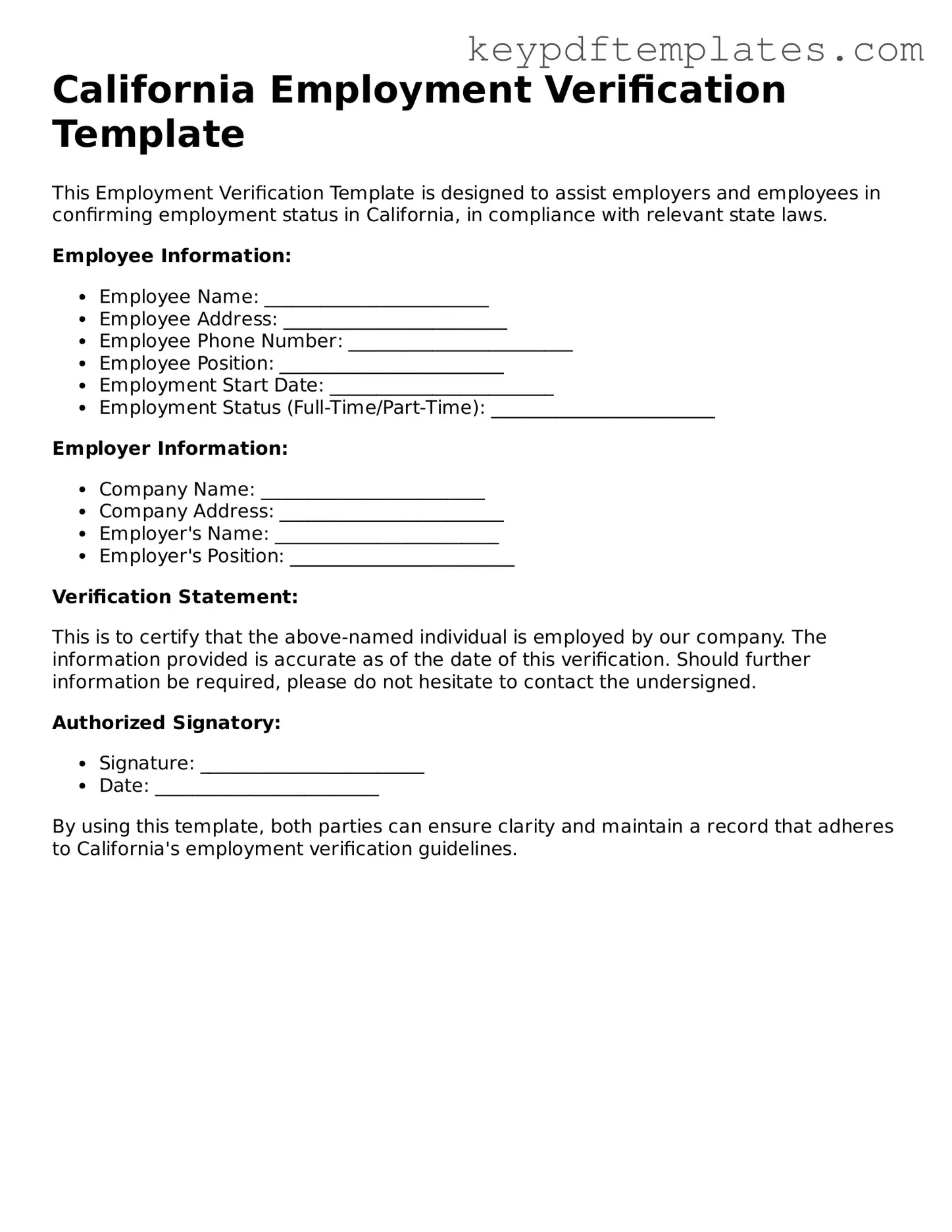Legal Employment Verification Document for the State of California
The California Employment Verification form is a crucial document used to confirm an individual's employment status and history. This form serves as a vital tool for employers, helping them to verify the credentials of prospective employees. Understanding its purpose and requirements is essential for both job seekers and employers navigating the hiring process.
Modify Document Online
